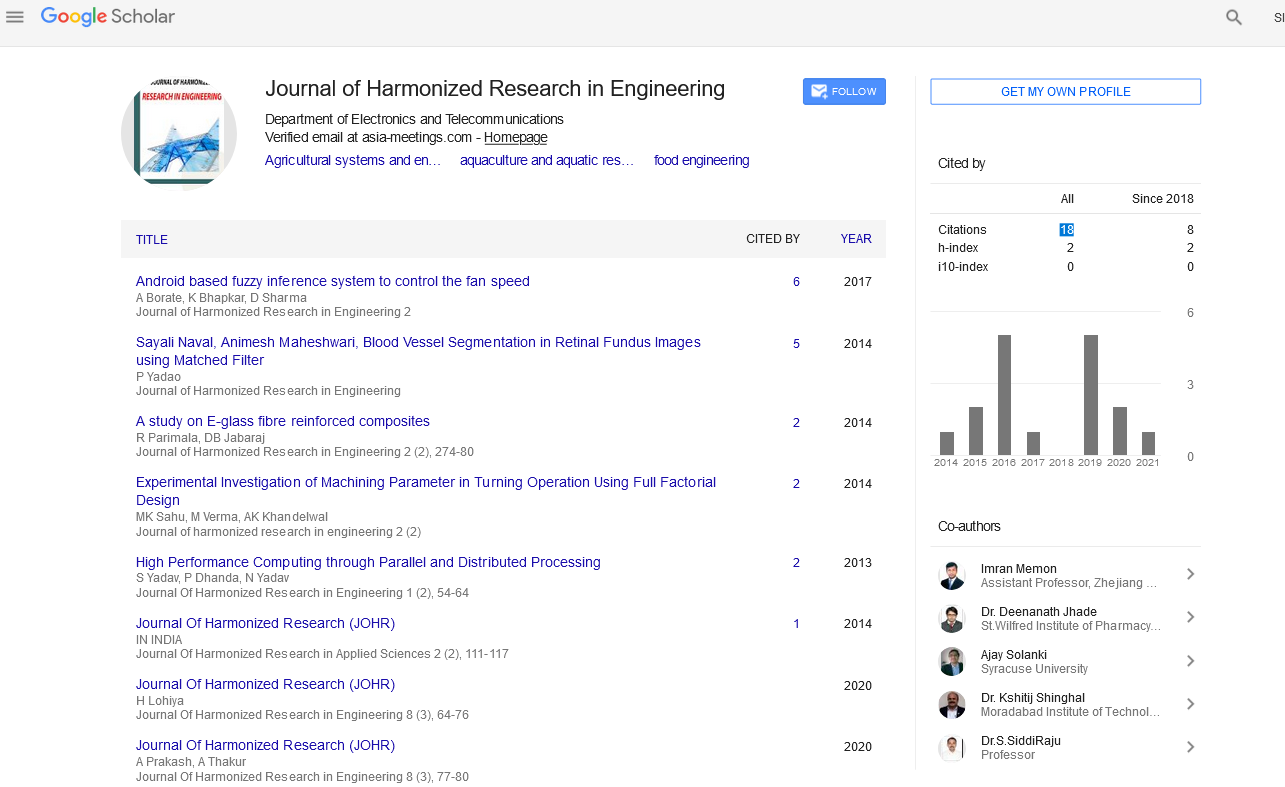Perspective - (2022) Volume 10, Issue 2
ADVANCED POWER LINE COMMUNICATION TECHNOLOGY FOR DATA TRANSFERRING: WORKING AND APPLICATION
Carl Badger*Received: Jun 02, 2022, Manuscript No. JHRE-22-66632; Editor assigned: Jun 07, 2022, Pre QC No. JHRE-22-66632(PQ); Reviewed: Jun 28, 2022, QC No. JHRE-22-66632; Revised: Jul 05, 2022, Manuscript No. JHRE-22-66632(R); Published: Jul 15, 2022, DOI: 10.30876/2347-7393.22.10.198
Description
Power Line Communications (PLC), sometimes known as Power Line Telecommunications (PLT), is a communication system that transmits signals over existing public and private wiring. High-speed data, speech, and videos are sent across low-voltage power lines using PLC communication signals.
PLC is a technology that has been in use for years, but it has recently gained in popularity due to the introduction of new communication technologies that are supported by PLC, it is a dependable communication medium for applications such as the Internet of Things (IoT) and Smart Grids.
Power line communication
Power Line Communication is a way of delivering power and data for communication over an existing network of wires from one end to the other. It transmits broadband data over cables that are currently being used to transmit electric power using a modular signal. This can now be accomplished through the home or premises wiring, as well as the current electric power distribution infrastructure.
BPL (Broadband over Power Line), is commonly known as power-line Internet, is a technology that uses PLC to provide Internet connectivity over transmission lines. BPL technology with PLC is frequently utilised in distant locations where PDSL connections provide limited Internet access.
Types of power line communication (PLC)
There are three different types of PLCs:
In-house networking: Using in-house mains power cable, high-speed data transmission can be provided for home networking.
Broadband over power line: Broadband internet connectivity can be provided over outdoor power lines.
In-house narrowband applications: Low-bit-rate data services such as home automation and intercoms can be managed and utilised for communication via in-house power mains.
Narrowband outdoor applications can be utilised for automatic metre reading, remote surveillance, and control.
Working of PLC
PLC, like any other communication technology has a sender who modulates the data to be delivered through a communication media, and a receiver who demodulates the data for further use. Because it is installed in the same wiring system as the communication signals, PLC also allows the user to manage and monitor all connected devices to the power line. In comparison to the old system, the PLC sends a less fluctuating output.
Modulation schemes used in PLC
Orthogonal Frequency Division Multiplexing (OFDM), Binary Phase Shift Keying (BPSK), Frequency Shift Keying (FSK), Spread-FSK (S-FSK), and proprietary techniques (such as Differential Code Shift Keying (DCSK)) are some of the modulation schemes utilised in PLC. Fast Fourier Transforms (FFT) and Inverse-FFT (IFFT) produced from OFDM enable high data rates, but they demand a lot of computer power. BPSK and FSK, on the other hand, are common and simple modulation schemes that can be utilised in PLCs but have poor data rates. As a result, the current PLC modulation strategy is OFDM with PSK modulation, which can manage such a large computation.
Uses of PLC
Radio programmes, utility company control switching mechanisms, transmission line protection, and automatic metre reading are all handled by the PLC. Aside from that, some automobile applications send data, voice, and music through a Direct Current (DC) battery power line with appropriate filters to reduce line noise from the final output. Power line carrier, Power Line Digital Subscriber Line (PDSL), Power Line Telecom (PLT), Power Line Networking (PLN), mains communication, and broadband through power lines are all terms used to describe Power Line Communication (PLC).
Advantages
• Low Implementation Expenses: Because PLC does not require the installation of additional cables, implementation costs are greatly reduced.
• Long Range: PLC communicate with hard-to-reach nodes where the RF wireless signal is attenuated, such as in underground constructions or buildings with barriers and metal walls.
• Lower Operating Costs: When compared to other existing technologies such as RF wireless or Visible Light Communication (VLC) systems, PLC is a low-cost alternative.
• Indoor high Speed: The integration of PLC and VLC technologies has recently attracted a lot of research interest, resulting in the creation of a new generation of high-speed indoor communications for a variety of applications.
These benefits encourage the use of PLC networks in a variety of industries. However, there are certain drawbacks to having benefits.
Disadvantages
Low transmission speed, sensitivity to disturbance, nonlinear distortion and cross-modulation across channels, large size, and high price of capacitors and inductors employed in the PLC system are all negatives. PLC is still not recommended in some situations due to these drawbacks. The main issue that the PLC has till now is that the power wiring in the PLC technology is unshielded and untwisted, which means that the wiring will radiate enormous amounts of radio energy, causing interference to other users on the same frequency band. The radio signals radiated by the PLC wirings will also cause some interference to the BPL (Broadband over Power Line) systems.
Applications of PLC
PLC is frequently employed in Smart grid and microinverter technologies. PLC will soon have more adaptation for applications such as lighting (for traffic light control, LED dimming, etc.), industrial (for irrigation control, etc.), machine-to-machine (for vending machines or a hotel’s reception-to-room communication), telemetry (e.g. offshore oil rigs), transportation (for electronics in cars, trains, and aeroplanes).

Google Scholar citation report
Citations : 43
Journal of Harmonized Research in Engineering received 43 citations as per google scholar report









